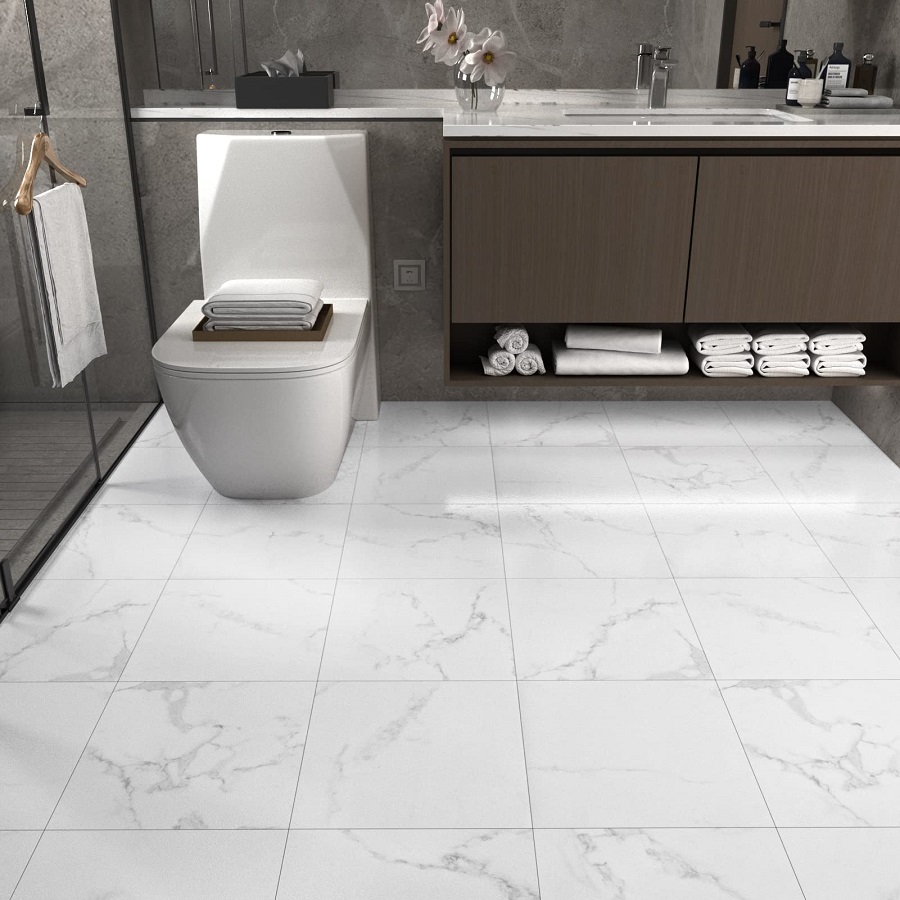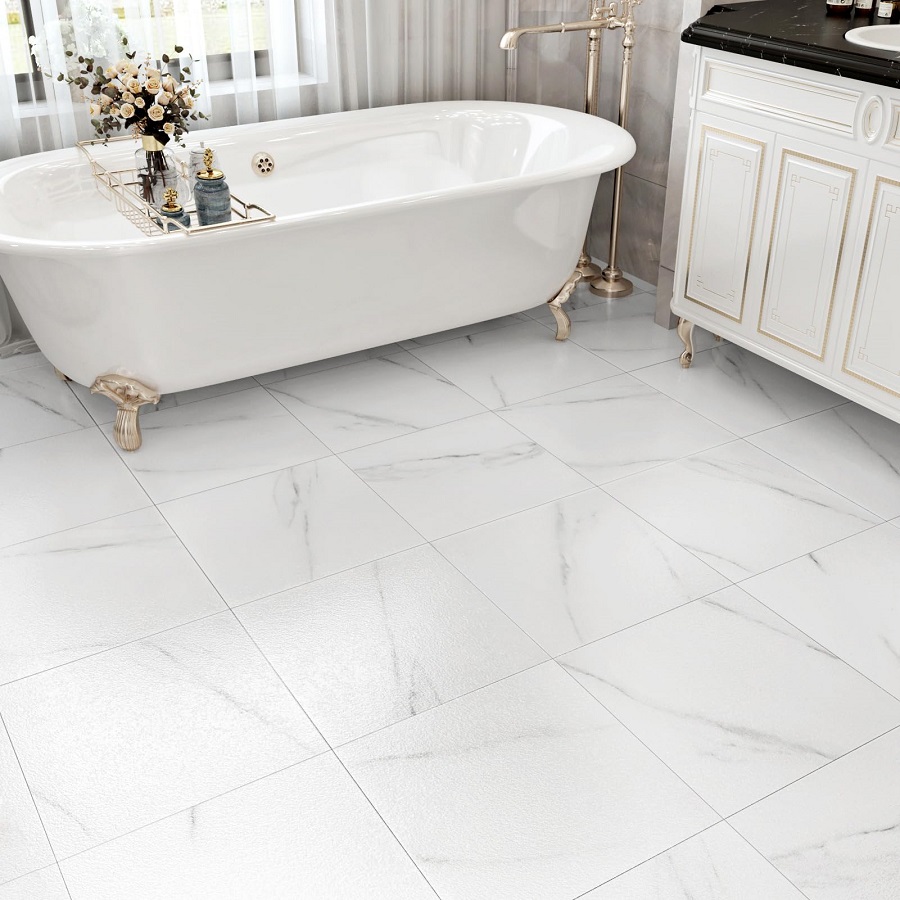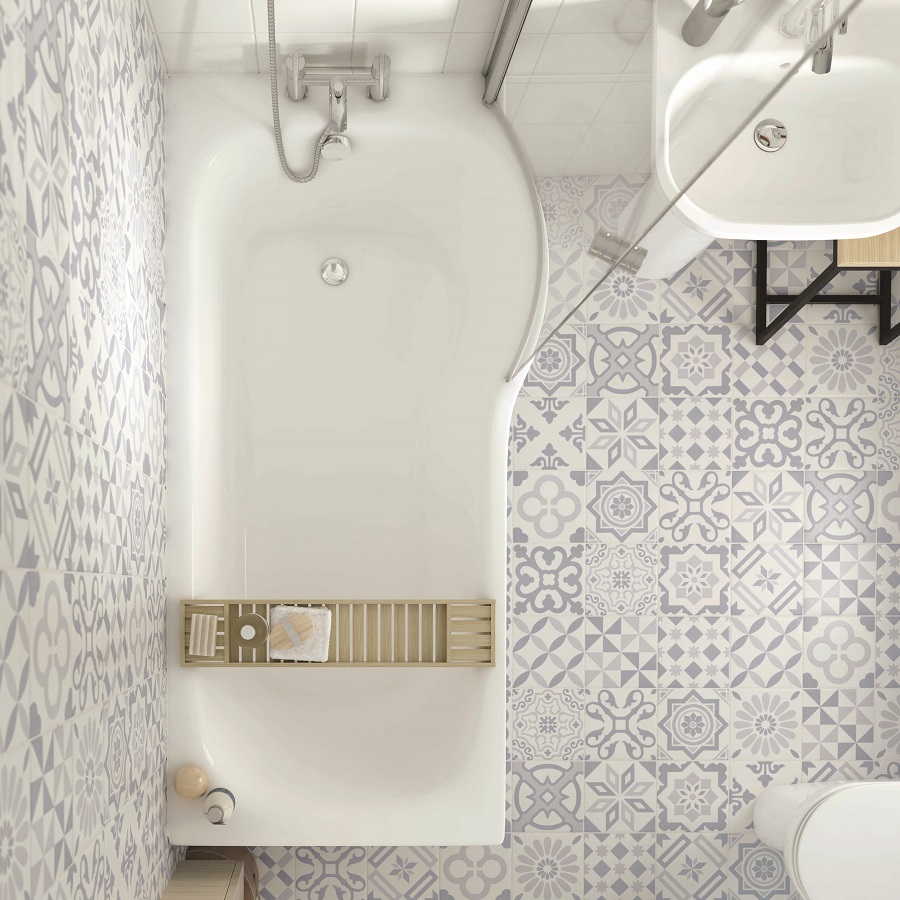Keeping bathroom floor tiles clean is essential not just for aesthetic appeal but also for hygiene. Bathroom tiles can accumulate dirt, soap scum, and mildew over time, making regular cleaning a necessity. This article will guide you through effective techniques and tips to achieve a sparkling finish for your bathroom floor tiles.
Understanding Your Bathroom Tiles
Types of Bathroom Floor Tiles
Before diving into cleaning methods, it’s important to understand the type of tiles in your bathroom. Common materials include ceramic, porcelain, vinyl, and natural stone. Each type has unique properties and cleaning requirements. For instance, ceramic and porcelain tiles are generally more resistant to stains and moisture, while natural stone tiles like marble or granite may require more delicate care due to their porous nature.
Tile Finishes and Their Care
Tiles come in various finishes—glossy, matte, textured, and more. Glossy tiles can show water spots and fingerprints more readily, requiring specific cleaning techniques to restore their shine. Textured tiles, on the other hand, might trap dirt more easily, necessitating a more thorough scrubbing. Understanding these differences allows you to choose the right cleaning method tailored to your tile type and finish.

Preparing for the Cleaning Process
Gather Your Cleaning Supplies
Before starting, gather all necessary cleaning supplies. Essential items include a broom or vacuum, mop, bucket, and appropriate cleaning solutions. You may opt for commercial tile cleaners, but many household items, such as vinegar and baking soda, can also be effective. A soft brush or scrubbing pad will help remove stubborn stains without scratching the tiles.
Safety First
While cleaning, prioritize safety. Wear gloves to protect your hands from harsh chemicals and ensure proper ventilation in the bathroom. If you’re using commercial cleaners, read the labels carefully to avoid harmful reactions, especially if you’re mixing different products. Additionally, consider wearing a mask if you’re sensitive to strong scents or dust.
Initial Cleaning Steps
Sweeping or Vacuuming the Floor
The first step in cleaning your bathroom floor tiles is to remove loose dirt and debris. Use a broom or vacuum to thoroughly sweep the floor, paying attention to corners and edges where dirt tends to accumulate. Regular sweeping will prevent dirt buildup and make deep cleaning easier.
Damp Mopping the Surface
After sweeping, damp mop the floor using warm water. A microfiber mop is ideal, as it effectively traps dirt without spreading it around. This initial mopping helps lift any remaining dirt and prepares the surface for deeper cleaning. Avoid using excessive water, especially on natural stone tiles, which can absorb moisture and lead to damage.
Choosing the Right Cleaning Solution
Homemade Solutions
For an eco-friendly approach, consider homemade cleaning solutions. A mixture of equal parts vinegar and water can effectively cut through soap scum and grime. Alternatively, a paste made of baking soda and water can tackle stubborn stains on non-porous tiles. Apply the solution using a soft cloth or sponge, allowing it to sit for a few minutes before scrubbing.
Commercial Tile Cleaners
If homemade solutions aren’t effective, consider commercial tile cleaners designed specifically for your tile type. These products often contain specialized ingredients for breaking down tough stains and disinfecting surfaces. When using commercial cleaners, follow the manufacturer’s instructions for optimal results while ensuring compatibility with your tile material.

Deep Cleaning Techniques
Scrubbing Stubborn Stains
For tough stains that don’t budge with regular cleaning, a little extra effort is required. Use a soft-bristle brush or a non-abrasive scrubbing pad to gently scrub the affected area. For natural stone tiles, be cautious with the pressure applied, as excessive scrubbing can cause scratches or dull the surface. For ceramic and porcelain, you can apply more pressure, but always test in an inconspicuous area first.
Using Steam Cleaners
Steam cleaners are an effective tool for deep cleaning bathroom floor tiles. They utilize high-temperature steam to loosen dirt and kill germs without the need for harsh chemicals. This method is particularly beneficial for textured tiles that trap grime. Ensure the steam cleaner is suitable for your tile type and follow the manufacturer’s guidelines for safe use.
Rinsing and Drying the Tiles
Thoroughly Rinse the Floor
After scrubbing, it’s crucial to rinse the tiles thoroughly to remove any residue from cleaning solutions. Use a clean mop and fresh water to wipe down the floor, ensuring no cleaning product remains. Residue can attract dirt and lead to a dull appearance. For large areas, consider using a wet/dry vacuum to expedite the rinsing process.
Drying the Surface
After rinsing, dry the tiles with a clean, dry mop or towel. Allowing water to sit on the tiles can lead to water spots and mildew growth. If your bathroom lacks adequate ventilation, consider using a fan or opening windows to promote quicker drying.
Preventive Measures for Long-Lasting Cleanliness
Regular Maintenance Routine
Establishing a regular cleaning routine can significantly reduce the amount of time and effort needed for deep cleaning sessions. Aim to sweep or vacuum the bathroom floor at least once a week, followed by a damp mop. This will help keep dirt and grime at bay and maintain the freshness of your bathroom.
Addressing Spills Immediately
Promptly addressing spills is essential in preventing stains. If you notice water, soap, or any other substance on your bathroom floor, clean it up immediately. The longer a spill sits, the greater the chance it will stain or create a slippery hazard. Keeping cleaning supplies within easy reach can facilitate quick cleanups.
Tackling Specific Issues
Removing Grout Stains
Grout can often become discolored and stained, detracting from the overall appearance of your bathroom tiles. To clean grout lines, apply a paste of baking soda and water, then scrub with a toothbrush or a specialized grout brush. For tougher stains, consider using a mixture of hydrogen peroxide and baking soda, applying it directly to the grout and letting it sit for a few minutes before scrubbing.
Dealing with Mildew and Mold
Mildew and mold thrive in damp environments, making bathrooms susceptible to growth. To combat this issue, use a mixture of water and vinegar or a commercial mold remover. Spray the affected areas, allow the solution to sit, and then scrub with a brush. After cleaning, ensure good ventilation in the bathroom to prevent future mold growth.

Enhancing the Shine
Polishing for a Sparkling Finish
To achieve a sparkling finish after cleaning, consider polishing your tiles, especially if they are glossy ceramic or porcelain. Use a tile polish or a mixture of vinegar and water for a natural solution. Apply the polish according to the product instructions, buffing with a clean cloth to enhance shine and protection.
Routine Buffing
In addition to polishing, routine buffing can help maintain the shine of your tiles. Use a dry microfiber cloth or a soft buffer to gently buff the tiles after cleaning. This step not only enhances shine but also removes any remaining residues, leaving your floor looking immaculate.
Special Considerations for Natural Stone Tiles
Gentle Cleaning Methods
Natural stone tiles require more delicate cleaning methods compared to ceramic or porcelain. Always avoid acidic cleaners, such as vinegar, which can damage the stone. Instead, opt for pH-balanced stone cleaners specifically designed for natural surfaces. Follow the manufacturer’s recommendations for application and rinsing.
Sealing Natural Stone Tiles
Sealing is an important aspect of maintaining natural stone tiles. A quality sealant acts as a barrier against stains and moisture. Depending on the type of stone, sealing may need to be done annually or biannually. Regularly check for signs of wear on the sealant and reapply as needed to keep your tiles looking their best.
Conclusion
Achieving Sparkling Bathroom Floor Tiles
Cleaning bathroom floor tiles may seem like a daunting task, but with the right techniques and consistent maintenance, you can achieve a sparkling finish. By understanding your tile type, using appropriate cleaning solutions, and implementing preventive measures, you can keep your bathroom floor looking pristine.
The Importance of Regular Care
Regular care and attention not only enhance the appearance of your bathroom but also contribute to a healthier living environment. With these tips, you can ensure that your bathroom floor tiles remain clean, shiny, and ready to welcome you every day. Embrace a cleaning routine that fits your lifestyle, and enjoy the benefits of a sparkling bathroom!
